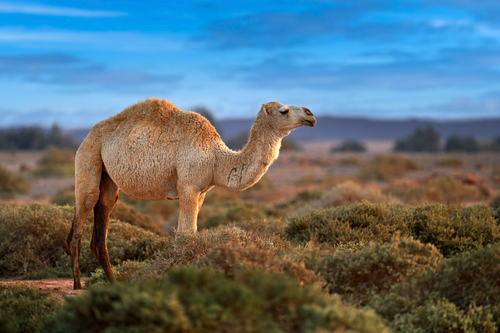
Dromedary
The dromedary camel, with its iconic single hump, elegantly traverses arid landscapes, showcasing remarkable endurance and resilience. Its adaptive features enable survival in harsh deserts, making it an essential part of nomadic cultures and ecosystems, where it aids in transportation and grazing. A true marvel of desert evolution.
40-50 years
Lifespan
300.0 - 690.0 kg
Weight
Length: 2.2 - 3.5 m
Size
Brown, Black, Tan, Cream
Color
3-5 years
Age of Sexual Maturity
4 months
Age of Weaning
40 mph
Top Speed
Characteristics
Camelus dromedarius, commonly known as the dromedary camel, is a large, desert-adapted mammal with a single hump. It thrives in arid environments, capable of enduring extreme temperatures due to its efficient water conservation and heat regulation. Dromedaries are social animals, often forming herds, and play a vital role in their ecosystems as transporters and grazers.
Distribution Range of the Dromedary
Camelus dromedarius, commonly known as the dromedary camel or Arabian camel, is native to the Middle East and parts of North Africa. Historically, it was found naturally in the Arabian Peninsula, but today, it is considered a domesticated species with feral populations in regions such as Australia.
Dromedary's Habitat
Environmental Conditions
Dromedary camels are adapted to arid and semi-arid environments. They thrive in deserts and dry savanna regions, where temperatures can be extremely high during the day and drop significantly at night. These areas typically receive sparse and irregular rainfall.
Ecological Niche
The dromedary camel is well-suited to desert life due to its ability to conserve water and endure long periods without it. It feeds on a variety of desert vegetation, including thorny plants, dry grasses, and shrubs. This species plays a crucial role in its ecosystem by facilitating seed dispersal and contributing to the grazing dynamics of arid landscapes.
Copyright @ Nature Style Limited. All Rights Reserved.
 English
English